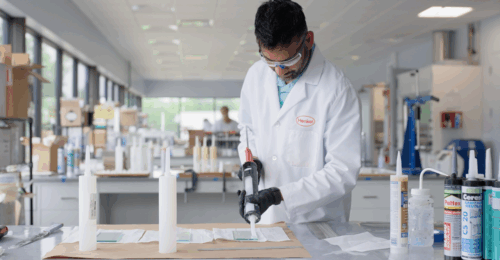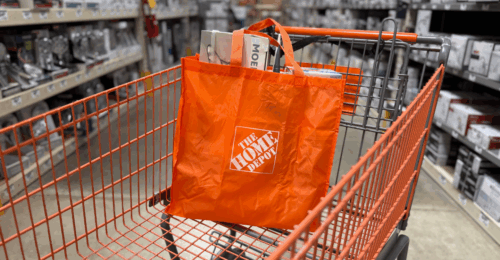Recently, The Home Depot announced its most ambitious carbon goal to date: pledging to reach 100% renewable electricity for its facilities by 2030. One of the architects of that goal is Craig D’Arcy, Director of Energy Management* for The Home Depot. We’ve invited Craig to Eco Actions to talk about the commitment and role his team plays in making it and keeping it.
EA: Some of the biggest news to come out of The Home Depot in recent years is its participation in RE100 and its commitment to reach 100% renewable electricity by 2030. What role does your team play in that?
CD: The short answer is that my team is responsible for everything related to utility expenses, specifically for our U.S. stores. There are two components to our team, and what we work on. First and foremost, we have to take care of the stores and make sure that the environment inside is where we want it to be from a lighting and temperature standpoint. So, half of our focus is on energy usage in the stores. This comes down to working with the energy management control systems that are in every one of our stores to optimize lighting and HVAC use and be as efficient as we can be.
The other half of our work is focused on cost. We leverage different project types to try and manage the rates that we pay. Over the past few years, we’ve spent most of our time leveraging alternative and renewable energy projects, working with rooftop solar, fuel cells and big, commercial, off-site projects. That’s how we were able to set such an aggressive goal.
EA: Are you saying that this is really a finance story, one that just so happens to have a sustainability advantage?
CD: It’s true. Our role is to drive expense efficiency, and the bottom line is that renewable energy will save the company money. You know, we started all the conversations around fuel cells and rooftop solar and off-site projects with the economic angle. That’s how we’ve been able to move forward to a place where we’ve got 208 stores that have fuel cells, 77 with rooftop solar and three big, off-site projects that we’ve onboarded.
But it’s important to point that out because we’ve been able to prove expense efficiency, pushing the envelope a little bit further and thinking about where we want to land as a company. That’s how we got to the 100% renewable electricity pledge – by starting with the financial case for renewable projects.
Also, by starting with the economics, it’s allowed us to push the envelope in ways we might not have if we focused purely on the ESG side. In fact, when it came to the RE100 pledge, it was critical that we had total alignment with our finance partners, and our approach to earlier projects was a huge help in those conversations.
EA: Can you explain how you got to the goal itself? What elements had to line up for The Home Depot to commit to the 100% renewable electricity goal by 2030?
CD: To say that we can reach 100% renewable electricity by 2030 means we have a good idea of what The Home Depot’s electricity use will be, and we have determined sources of renewable electricity to meet it.
There are two parts to that equation. The first thing we had to do was come up with a projection. We start with how much we’re using now and consider what that will look like in 2030. We have to think about new facilities that The Home Depot will onboard over that time. And we have to account for what we hope for in terms of improved energy efficiency in our facilities.
The second part of the equation is lining up sources of renewable electricity. We work closely with a third party to estimate output and the feasibility and reliability of new projects coming online.
Once the goal is set, the work starts. Between now and 2030, we have a lot of work to do to make sure that we’re tracking the right projects, and that they are in the right places.
One thing worth pointing out is that there are easier ways to do this. You know, we could simply go out and buy RECs on the market and claim the renewable energy credits. But we wanted to find the most thoughtful path there, one that meets our ESG sustainability commitments in a way that we’re proud of.
EA: What makes a renewable electricity project right for The Home Depot?
CD: It starts with the environment inside The Home Depot stores and with the comfort of the associates and customers who spend time inside. Once we feel good about that, then we solve for everything else.
We know that we are going to have more success when we focus on making sure we invest in projects in the places where they make financial sense. Otherwise, it has the potential to be an impediment to further actions and projects.
For example, I get a lot of questions about rooftop solar. People want to know why we don’t have more rooftop solar projects. One reason is roof age. When we evaluate renewable projects, we have to be careful of getting out in front of our skis, so to speak. If we invest in solar installations on roofs that are slated for replacement, we risk unwinding the economics of the solar project in the first place.
EA: When you talked about efficiency, you mentioned energy management building systems. What exactly does that mean, and how do you work with a building system?
CD: One of the biggest surprises for me has been the realization of just how impactful energy management systems can be. A little less than a decade ago, we partnered with Honeywell to upgrade all our energy management systems. In doing so, we took a new approach to our facilities, looking at our buildings as organisms and learning about them in that way.
The fact that we were even able to state a 100% renewable electricity goal is heavily influenced by all the improvements and efficiencies inside our stores. Wide-scale initiatives, like replacing our sales floor light fixtures with LEDs, have decreased our overall electricity needs such that we have less to solve for. In fact, because of our commitment to efficiency, the average The Home Depot store of today uses 50% less electricity than it did 10 years ago.
EA: What else has surprised you about energy management?
CD: One of the things that was surprising to all of us is related to the transition to LED lighting in all our stores. The benefits of LEDs went beyond what we expected and made a positive impact on our HVAC systems. As it happened, because there’s so much less heat coming out of an LED fixture, we found that our HVAC units did not need to run as much.
Another surprising thing is how quickly the technology and the information about renewables changes. I have to continually make sure that I don’t get stuck in dated thinking around these types of projects. What I mean by that is the financial impact of a solar project, wind project or fuel cell project is different now than it was a few years ago.
I know that my perspective has changed a lot, and I imagine the same is true for others. We have to continually refresh our thinking, analysis, and assumptions about renewable electricity and sustainability. I hope The Home Depot’s commitment to 100% renewable electricity inspires other companies to consider or reconsider sustainable energy projects.
*As of June 2022, Craig D’Arcy has transitioned to a new role as the Senior Director of Building Services for The Home Depot.






